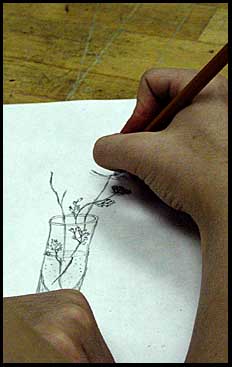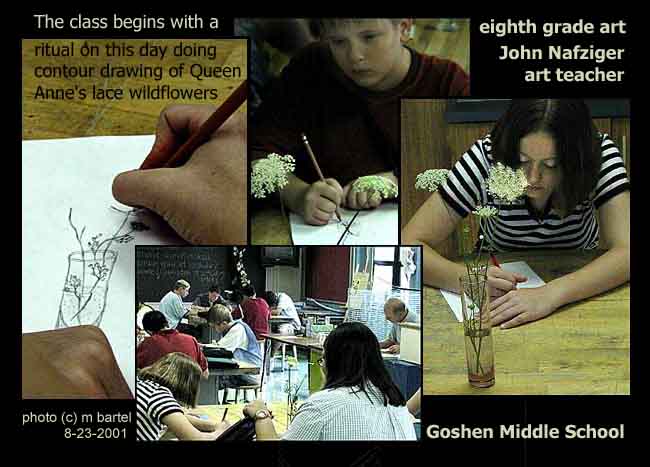START STRONG ESTABLISHING
THE RIGHT ATMOSPHERE Interrupt the work soon enough to spend some time to discuss class behavior expectations. Start with essential details of classroom management and expectations of mutual respect. Later, if things start to get chaotic, the use of reminder questions sounds less bossy than shouting out demands for expectations that have not been previously mentioned. Reinforce this and add needed items every day until good management and behavior is habitual. Repeat the things that need repeating getting quieter instead of louder. Consider reminder questions instead of demands. Establish the routines needed for the habit of getting to work as they come into class. This avoids the tendency to waste time and get rowdy. See rituals. HOMEWORK STARTS TODAY WHAT IS ART HOMEWORK Teaching is also creative. Our studio is the classroom. As teachers we get ready to put the lessons into action by planning. Our homework has been to prepare our own minds by thinking things through, by questioning, by making sketches, by making lists, by reading, by journal writing, by noticing things, by looking for ideas, by practicing skills, and so on. Our students may not understand the creative processes that we take for granted. They may need class work to prepare them for the unique homework that prepares them for a future class work assignment. They should expect to show up with ideas and inspiration because the teacher has been dropping hints and asking questions relating to the upcoming assignments. Students learn this creative homework by practicing it in class. In class they have start making lists of ideas, but they expect to add to them whenever they think of more. Maybe they have formed teams and given each other tasks. They have practiced phrasing questions that get the imaginations, memories, and observations going. They have started a sketchbook and a journal where they put things down that they notice in their surroundings that they might need in the next projects. I would avoid all copy work because it does not teach much about the ability to think creatively and artistically. FINISH
SMART
© All rights reserved. You are encouraged to provide links to this page, but to make printed copies or to include as part of another web site, you must have permission. Please send comments about your experiences related to the ideas on this page. Contact the author to send comments about this article or requests for permission to make copies. Teachers may make one copy for their own personal use. © 2003 Marvin Bartel, Ed.D., emeritus
professor of art, Goshen College Links to more teaching ideas from Marvin Bartel:
|

